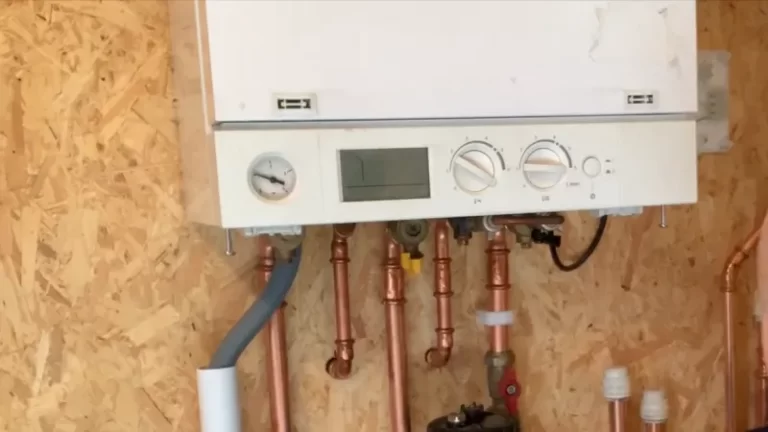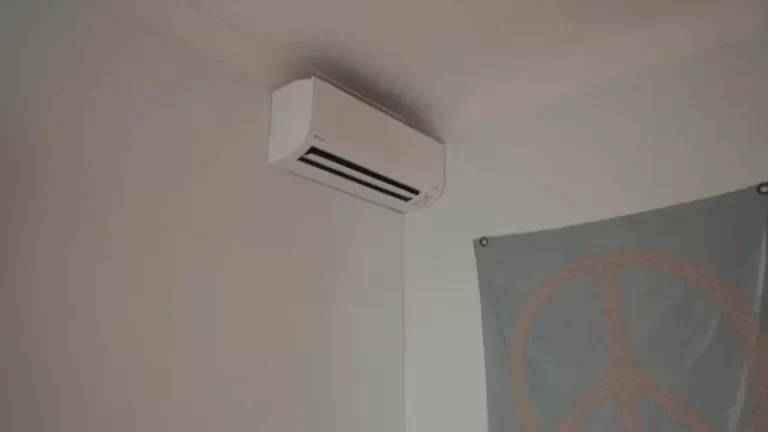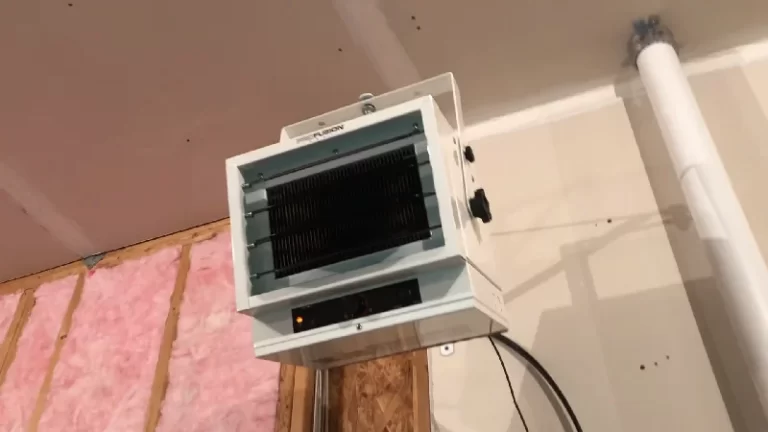Boiler Shut Off Switch: Your #1 Emergency Control Guide
In a quiet corner of your home, often in a basement or utility closet, your boiler works tirelessly. It provides the warmth and hot water central to your daily comfort. Yet, many homeowners are unfamiliar with one of its most critical safety features: the boiler shut off switch. Understanding this simple control is not just a matter of convenience; it’s a crucial component of home safety that can prevent disaster.
Ignoring strange noises, unusual smells, or visible leaks from your boiler system can lead to catastrophic failures, including water damage, fire, or even dangerous gas leaks. The boiler shut off switch is your first line of defense in these scenarios. Knowing where it is, what it looks like, and exactly when to use it empowers you to take immediate, decisive action to protect your property and your family. This guide will walk you through every essential detail, ensuring you are prepared for any eventuality.
You'll Learn About
What is a Boiler Shut Off Switch and Why is it Critical?
The boiler shut off switch, often called an emergency shut off or a boiler disconnect switch, is a dedicated electrical switch that cuts all power to your boiler system. Its sole purpose is to provide a quick and definitive way to stop the boiler’s operation, including its burner, fuel supply components, and internal electronics. This immediate shutdown is vital in an emergency, as it stops the flow of fuel (gas or oil) and electricity, mitigating immediate hazards.
It’s important not to confuse this switch with your thermostat or the circuit breaker in your main electrical panel. While a thermostat sends signals to the boiler to turn on or off based on temperature, it doesn’t sever the main power supply. Similarly, while a circuit breaker will trip during an electrical fault, the emergency switch is a manual control designed for urgent, intentional shutdown. Building codes often mandate its installation in a specific, easily accessible location for this very reason.
The Unseen Dangers: Why This Switch is Your First Defense
The potential dangers associated with a malfunctioning boiler are severe. For gas boilers, a leak can fill your home with flammable natural gas, creating a risk of explosion from the smallest spark. Oil boilers can malfunction and release carbon monoxide, a colorless, odorless gas that is highly toxic. Furthermore, any boiler can suffer from critical failures that lead to severe water leaks, flooding, and extensive property damage.
The boiler shut off switch acts as a master override in these situations. By cutting the power, you halt the processes that are causing the danger. This simple action can be the difference between a manageable repair and a full-blown emergency, giving you the critical moments needed to call for professional help without the situation escalating.
Locating Your Boiler Shut Off Switch: A Step-by-Step Guide
Knowing the location of your boiler shut off switch is non-negotiable for any homeowner. You should identify its location before you ever need to use it in an emergency. While placement can vary, there are several common locations where it is typically installed for safety and accessibility.
Start by looking in the immediate vicinity of the boiler itself. Often, there will be a switch on the unit or on a nearby wall. However, safety codes frequently require the primary emergency shut off switch to be located outside of the room containing the boiler. This ensures that in case of a fire, smoke, or gas leak in the boiler room, you can safely turn off the appliance without entering a hazardous area.

Common locations include:
- At the top of the basement stairs: This is a very common placement, allowing for quick access before descending into the basement where the boiler is often located.
- Just outside the utility room door: If your boiler is in a dedicated closet or room, the switch will likely be on the wall right outside the entrance.
- Near the main electrical panel: In some homes, the switch may be grouped with other major appliance controls.
Visually, you are typically looking for a standard light switch mounted on a bright red plate. This coloring is intentional to make it stand out for emergency identification. It might be a simple toggle switch or a rocker switch, sometimes with a protective cover to prevent it from being accidentally flipped. Once you find it, make sure every adult in your household knows its location and purpose.
When and How to Use Your Boiler Shut Off Switch
The decision to use the boiler shut off switch should be swift and confident in certain situations. It is your go-to control for both emergencies and specific maintenance tasks. Do not hesitate to use it if you suspect a serious problem.
Emergency Scenarios Requiring Immediate Shutdown
1. You Smell Gas or Fuel Oil: If you detect the distinct “rotten egg” odor of natural gas or the heavy smell of heating oil, this is a critical emergency. Do not use any phones or flip any other electrical switches. Immediately go to the boiler shut off switch, turn off the boiler, evacuate the house, and call your gas company or 911 from a safe distance.
2. Water is Leaking or Pooling Around the Boiler: A significant water leak can cause severe property damage and create an electrical hazard if it comes into contact with the boiler’s wiring. Shutting off the boiler is the first step to stop the system from operating and potentially worsening the leak. After flipping the switch, you should also shut off the main water supply to the boiler if you can do so safely.
3. You Hear Loud, Unusual Noises: While boilers make some noise during normal operation, loud banging, whistling, or grinding sounds are signs of a serious problem. These noises, often called “kettling,” can indicate a buildup of limescale on the heat exchanger, low water pressure, or a failing pump. Turning the boiler off immediately can prevent further damage to the system.
4. You See Smoke or Signs of Fire: This is the most urgent scenario. If you see smoke or flames coming from your boiler, use the emergency shut off switch immediately if it is safe to do so, evacuate your home, and call the fire department.
Routine Maintenance and Service Calls
Beyond emergencies, the shut off switch is essential for safety during maintenance. Before performing any work on the system, such as bleeding radiators or replacing a thermostat, it’s a wise precaution to shut off the boiler’s power. While some tasks may seem minor, like dealing with a leaking radiator vent, cutting the power ensures no electrical components can activate unexpectedly. Always inform your HVAC technician that you know the location of the switch when they arrive for a service call.
Boiler Shut Off Switch vs. Other Controls: Clearing the Confusion
Understanding the different controls for your heating system is key to operating it safely and efficiently. The boiler shut off switch has a distinct role that separates it from the thermostat, gas valve, and circuit breaker. Mistaking one for another in an emergency can waste precious time.
The following table breaks down the primary function and typical use case for each of these critical components, helping you understand what to use and when.
| Control | Primary Function | Common Use Case | Typical Location |
|---|---|---|---|
| Boiler Shut Off Switch | Manually cuts all electrical power to the boiler system. | Emergencies (gas/water leaks, fire), and pre-maintenance safety. | Outside the boiler room, top of basement stairs. |
| Thermostat | Signals the boiler to produce heat based on room temperature. | Daily temperature regulation and scheduling. | On a central wall in the main living area. |
| Gas Valve | Controls the physical flow of gas to the boiler’s burner. | Turned off by professionals during major repairs or gas line work. | On the gas pipe leading directly to the boiler. |
| Circuit Breaker | Automatically trips to cut power during an electrical overload. | Resets power after a trip; can be manually flipped for electrical work. | In the main electrical panel (breaker box) for the house. |
Is Your Boiler Shut Off Switch Working Correctly?
A safety device is only useful if it works. Periodically, you should perform a simple, safe test of your boiler shut off switch. To do this, turn your thermostat up so the boiler kicks on. Once you hear it running, go to the emergency switch and flip it to the “off” position. The boiler should immediately shut down completely.
After confirming it has shut off, flip the switch back to the “on” position. The boiler should begin its startup sequence after a brief delay. Signs of a faulty switch include a loose or wobbly feel, buzzing sounds from the switch plate, or if the boiler’s power flickers. If you notice any of these issues, or if the switch feels stuck or painted over, it’s crucial to have it replaced by a qualified electrician or HVAC technician.
Troubleshooting Common Boiler Shut Off Switch Problems
Even a simple component like a switch can be a point of failure. If your boiler isn’t behaving as expected after you’ve used the shut off switch, a few common issues could be the cause. Understanding these can help you diagnose the problem before calling a professional.
Problem: Boiler Won’t Turn On After Using the Switch
This is a frequent concern. You’ve turned the power off for maintenance or a false alarm, and now it won’t restart. Before panicking, run through a simple checklist. First, ensure the shut off switch is flipped firmly and completely to the “ON” position. A partially engaged switch may not complete the circuit.
Next, check the circuit breaker for the boiler in your main electrical panel to ensure it hasn’t tripped. Finally, for older gas boilers, you may need to relight the pilot light. The sudden loss of power from the switch can sometimes extinguish it. The question of whether a pilot light goes out with the power is a common one, and for many models, the answer is yes. Follow the manufacturer’s instructions carefully for relighting it.
Problem: The Switch is Hot to the Touch or Buzzing
This indicates a serious electrical problem. A hot switch or a persistent buzzing sound is a sign of a loose connection or failing internal components, creating electrical resistance and heat. This is a significant fire hazard. Do not touch the switch again. Go to your main electrical panel and shut off the circuit breaker that powers the boiler, then call a licensed electrician immediately.
Upgrading Your Boiler Shut Off Switch: Modern Safety Features
While the basic toggle switch on a red plate is effective, modern options can provide enhanced safety and convenience. If you are replacing an old switch or installing a new boiler system, consider these upgrades. Switches with built-in protective covers prevent accidental shut-offs, which can be a nuisance and potentially lead to frozen pipes in winter.
For ultimate peace of mind, some homeowners are integrating their boiler controls into smart home systems. A smart switch connected to your boiler’s power line could allow you to remotely shut off the unit from your phone if you receive an alert from a smart water leak or gas detector while you are away from home. This represents a proactive leap in home safety technology, turning a manual control into an automated safeguard.
Integrating Boiler Safety with Other Home Systems
Your boiler’s shut off switch is part of a larger network of home heating and safety systems. Its effectiveness is enhanced when other components are working correctly. For instance, proper thermostat wiring is crucial for the boiler to receive the right commands. If you are upgrading your system, understanding details like a Sensi thermostat 2-wire installation ensures all components communicate seamlessly.
Regular maintenance of the entire system, from the boiler itself to the radiators and vents, prevents many of the emergency situations that would require using the shut off switch. A well-maintained system is a safer, more reliable system.
Conclusion: Your First Line of Defense
The boiler shut off switch may be one of the simplest components of your heating system, but it is undoubtedly one of the most important. It is your immediate, manual override in the face of a potentially dangerous malfunction. Taking the time now to locate your switch, understand its function, and ensure it is in good working order is a critical investment in your home’s safety.
Don’t wait for the smell of gas, the sound of banging pipes, or the sight of a growing puddle to start searching for this vital control. Make it a priority to familiarize yourself and your family with its location and purpose. In a moment of crisis, this knowledge will empower you to act quickly and decisively, protecting your home and ensuring your peace of mind.




